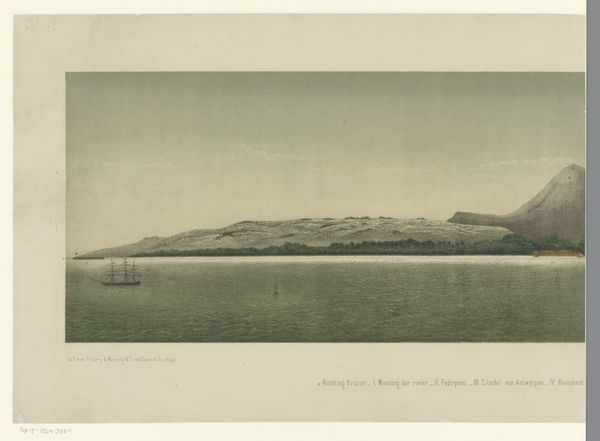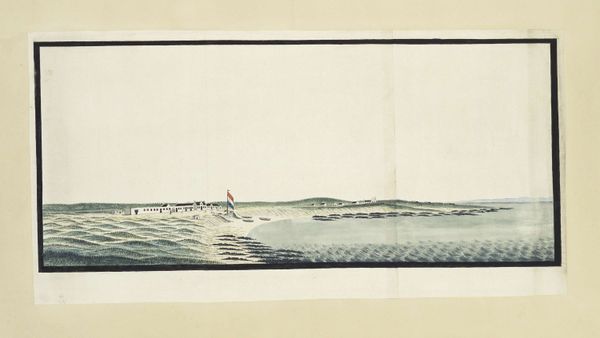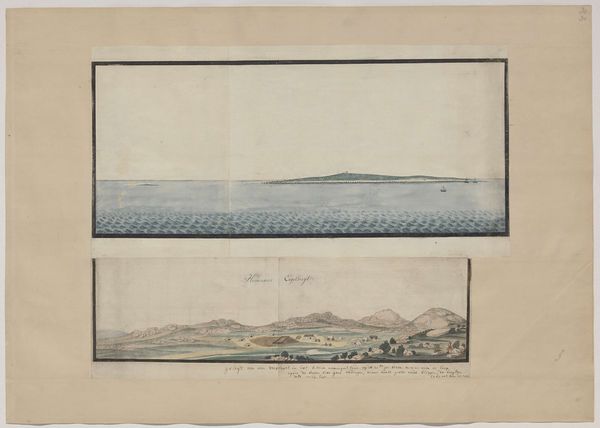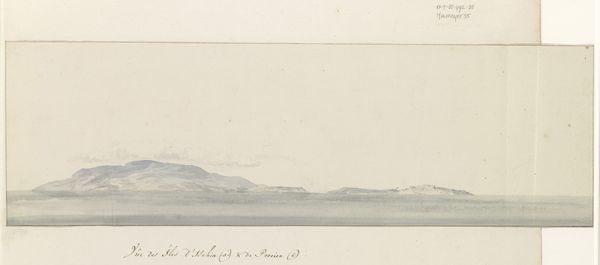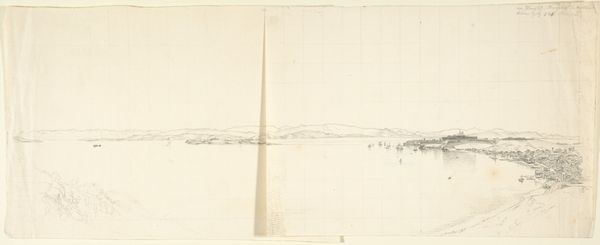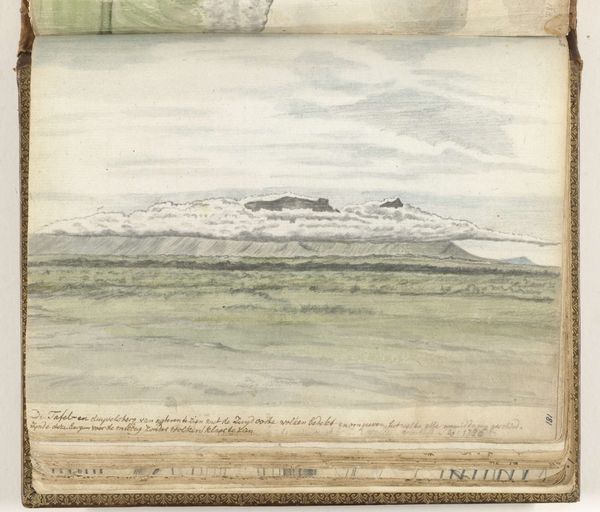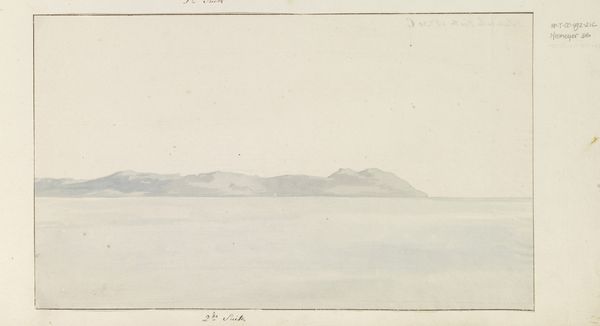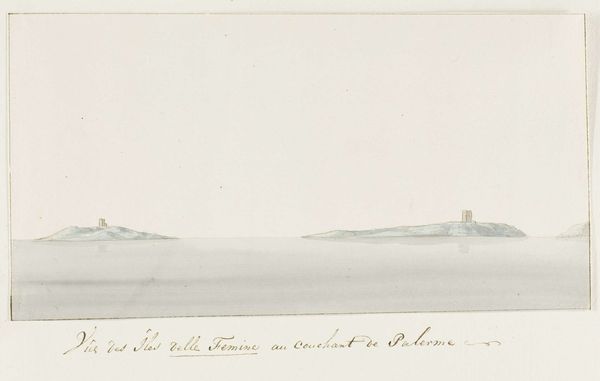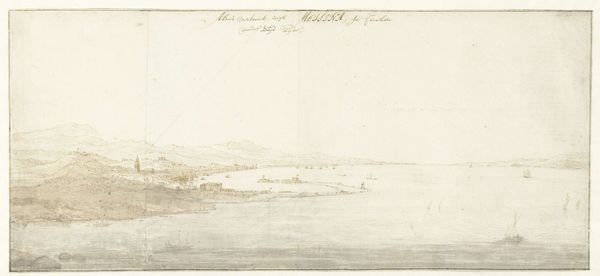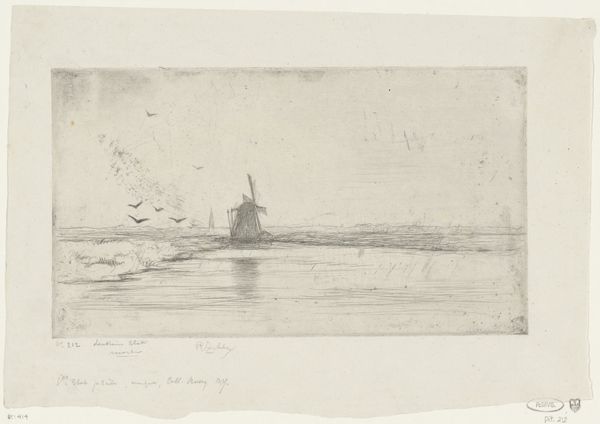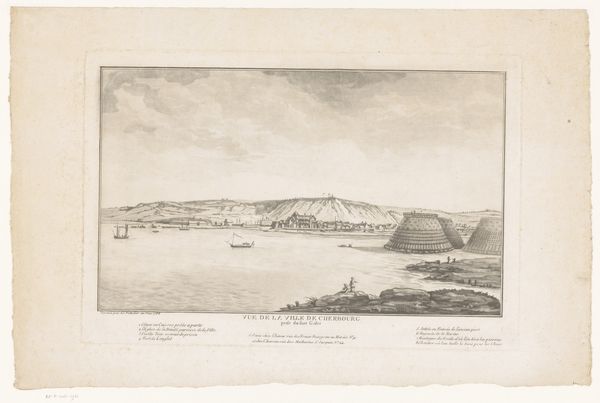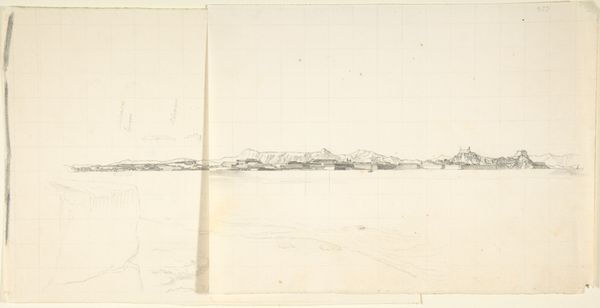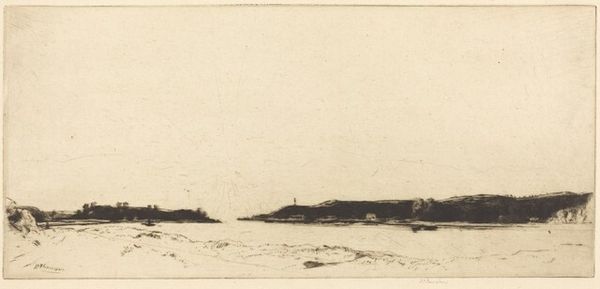
View of Robben Island from a distance of one hour south south-east from the shore Possibly 1777 - 1778
0:00
0:00
drawing, pencil
#
pencil drawn
#
drawing
#
light pencil work
#
pencil sketch
#
landscape
#
pencil
Dimensions: height 280 mm, width 660 mm
Copyright: Rijks Museum: Open Domain
Curator: This is "View of Robben Island from a distance of one hour south south-east from the shore," a pencil drawing possibly created between 1777 and 1778 by Robert Jacob Gordon. Editor: It's stark. A simple, light pencil sketch but there’s an almost haunting quietness to it, a sort of liminal space captured on paper. The island sits there, remote, against a vast expanse of sea and sky. Curator: Yes, and what is culturally repressed in that quietness? Robben Island is now known for its prison, its association with figures like Nelson Mandela. But even earlier it was a site of exile, of colonial segregation and incarceration. This serene image belies a history of suffering and resistance. Editor: Exactly. That island, viewed from this particular vantage point, takes on the symbolic weight of confinement and forced isolation. You can almost feel the psychological impact of being separated from the mainland, of being erased from society. Is that structure a signal? Curator: Indeed. It serves as a cultural beacon. We must examine the visual iconography of punishment and how landscape participates in constructing those narratives. Editor: Thinking about the artist's perspective also changes things. A light-handed sketch, such as this one, often hints toward neutrality or pure observation, which cannot possibly exist, in fact. How does Gordon's background affect his decision to present the island in this particular manner? Curator: Understanding Gordon's role as a commander in the Dutch East India Company, this seemingly neutral view can be questioned for its complicity in the colonial project. How did that vision aid, reinforce, or perpetuate that regime? His careful drawing served a larger agenda, possibly mapping resources. Editor: This piece becomes far more than just a simple sketch of an island. It shows us how the seemingly simple can be layered with context. Curator: A vital lesson as we question how these systems still present in cultural imagery that we engage with daily.
Comments
No comments
Be the first to comment and join the conversation on the ultimate creative platform.
